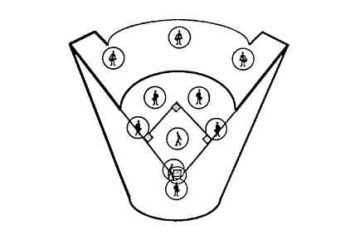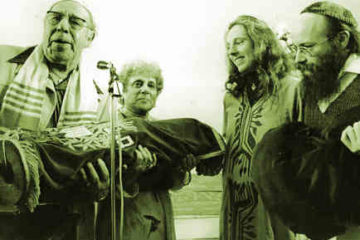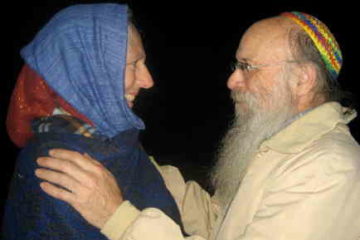The convergence of Passover in 1943 with two other significant events – a scientific discovery made in Basel and a civilian uprising in Warsaw – draws the author into pondering their connections.
As I began preparing for Passover last week, I recalled that we are in the midst of twin anniversaries that go back 64 years – the discovery of LSD’s potency by Dr. Albert Hofmann, and the Warsaw Ghetto revolt – both of which occurred in conjunction with that year’s Pesach. The first accidental absorption of lysergic acid diethylamide-25, and then, three days later, the first conscious ingestion of a minute quantity (250 micrograms) of this chemically synthesized psychoactive substance, have had, through its subsequent manufacture and distribution, a transformative psychological, social, and cultural influence on the world.
A mixed influence, to be sure, as not all users experience the same effect. For some, it has been a spell-binding journey of kaleidoscopic colors and spiritual exaltation, while for others, it has been a journey through hell and a visit to the depths of despair and depression – and for some, indeed, for many, to both these polar opposites, either on the same trip or in vastly contrasting trips.
The human psyche is a delicate mechanism, an arena where powerful internal forces strive for dominance and control. Aldous Huxley describes one function of the brain as a filter, one which carefully and constantly screens input and prevents overload, or, in kabbalistic terms, an excess of light for the strength of the vessel, a crisis which can cause a cracking, breaking, or shattering, a shiverat hakaylim. Scientists estimate that the human brain can process one million bits of information every second, but that only forty such bits become conscious. When this screen is lifted or made more permeable, the resulting flood of sensations, images, and concepts can upset the individual’s balance or lift him or her to new heights of inspiration. As William Blake wrote, “When the doors of perception are cleansed, everything will appear as it is, infinite.”
This perception, I would add, includes an appreciation of the interconnectedness of all things, the inner meaning of HaShem Echad [God is One], as I understand the phrase. Ben Azzai avers, “There is no person that has not his hour and no thing that has not its place” (Pirke Avot, 4:3). Likewise, “Ain od milvado – There is no place that lacks God’s Presence” (Devarim, 4:35). To me, therefore, the maintenance of balance and the quest for justice, tzedek [equity], in all realms, is the implied mandate of this experience, even a religious obligation.
The first of these signal events, the accidental absorption, occurred on April 16, 1943, which, following the Hebrew lunar calendar, coincides with the 11th day of Nisan. In 1943, 11 Nisan fell on a Friday, Erev Shabbat HaGadol, “The Great Shabbos.” This special Shabbat precedes Passover, which is biblically designated to begin on the 14th day of Nisan, “ba-erev,” in the evening, “Seder night.” That year it fell on a Monday, the evening of April 19th. April 16th was the day on which Albert Hofmann, the chemist who had first discovered LSD-25 in 1938, and then set it aside as being of no observable value, decided to cook up another batch and test it again. At some point during the experiment, he could not help but notice unusual physical and mental phenomena. The full account of these changes and his subsequent actions are fully described in his book, LSD – My Problem Child, which I highly recommend. He did not know to what to ascribe the onset of these phenomena, but he suspected that LSD-25 was the cause, a minute quantity of which, he reasoned, might have been absorbed through his skin. Three days later, he tried the experiment again. This time he purposely ingested, orally, a miniscule quantity of the compound and was rewarded with the first full-blown, conscious LSD trip in history.
Although Dr. Hofmann is not a Jew, I am persuaded that his experience replicated the true meaning of the Pesach Holy Day, which is known in our liturgy as Z’man Chayrutaynu, “the Season of our Liberation.” This year, the 11th day of Nisan also falls on a Friday, March 30th, while the 14th day of Nisan, Erev Pesach, again falls on a Monday, April 2nd, with the Seder in the evening, although both anniversaries occur 17 days earlier than in 1943, according to the solar calendar.
In 1943, at this same time, another signal event occurred. Nazi generals, intending to make an offering to their Fuhrer on the following day, his birthday, April 20, directed their war machine in an attack on the Warsaw Ghetto. To their shock and dismay, the lightly armed but desperate and determined Jewish residents mounted a counter-attack and drove the Germans out. This revolt was the first civilian uprising in occupied Europe.
The defense of the Ghetto lasted for three weeks, and pockets of resistance continued to be active for several months afterwards. The heroic resistance of the Jews and the dismay of the German forces and their collaborators marked a turning point in the war. The Poles were emboldened by Jewish resistance to stage their own revolt a year later, and the uprising encouraged partisan fighters, concentration camp prisoners, and allied forces alike. It punctured the myth of Aryan invulnerability and led to the ultimate defeat of the Nazi regime.
Thus, the struggle for freedom encoded in the Hagadah Shel Pesach was manifested in multiple ways in that terrible and magnificent spring of 1943, sixty-four years ago. May we give thanks for our continual process of liberation and redemption and rejoice in it again and again. Perhaps this year we can all lift the Fifth Cup to the many journeys we have taken and the ones yet to be made, by all of humankind, and by all forms of life, to the time of our true and lasting liberation.
Reuven Goldfarb, founding editor of AGADA, is the author of essays as diverse as “Baseball Kabbalah” and “Your Portion in the Torah.” A resident of Tzfat for the past six years, he has a long-standing interest in correspondences.
My reply to Talkback entries:
“Dear Readers (especially those who have been puzzled or provoked by the connections I tried to make),
“The thematic thread that unites these three events is liberation – 1) from slavery through divine intervention, 2) from oppression through armed revolt, and 3) from the prison of conventional thinking and emotional armoring via new means to explore inner space and reconnect to the natural world. [This is a slightly improved paragraph.]
“Nobody objected to my linking the first two. Only when I linked them both to the third event were people offended, upset, or confused. If, as in the opinion of many readers, you don’t regard LSD as a possible path to liberation – even for some people, not for all – the linkage won’t make sense. That’s why this talkback exchange turned into a debate over the merits of LSD. Since I do consider it a vehicle for experiencing expanded consciousness (mochin d’gadlut), even if the attainment is temporary, I regard the temporal-historical coincidence as meaningful.
“Thanks for all your comments. I include thanks to all who thought it was a joke or pernicious in some way. A copy of the article as originally submitted is available from me upon request.
“Chag Sameach!
“Reuven”
P.S. If I’d had the space, perhaps I would have added to 3), above, “…in optimal settings, such as with a stable guide or tripping companion, in pleasant and natural surroundings, with basic support gear on hand, of adult years, and so on. Some correspondents have also spoken in favor of psilocybin and peyote or mescaline, preferring these organic psychedelic compounds to the synthetic varieties. Personally, it’s been a long time since I sampled these potent allies from the plant kingdom or from the laboratory, but to allay the concerns of those who persist in regarding them as gateway drugs -gateways, that is, to addictive substances such as cocaine and heroin (aka crack and smack or blow and snow) – I beg to differ. For those who are so pre-disposed, that may be the case, but I think it more likely that psychedelics are potential gateways to spiritual practices, such as prayer, meditation, and study, or art, music, dance, and poetry, that can keep one more constantly alert and attuned to the awesome beauty and majesty of the creation and more willing to commit to keeping it healthy and flourishing. In that way, LSD-25 can serve as an antidote to the death and destruction that characterized the era into which it was born.”
Afterword: To my surprise and delight, the article above, which I had written and almost immediately circulated on the Aleph-Pnai-Or list, and subsequently revised to conform with newspaper guidelines, was accepted for publication by The Jerusalem Post, where it appeared, after further editorial treatment, in the Op-Ed section on Thursday, April 5th, 2007, the 17th of Nisan, 5767, my mother’s 22nd Yahrzeit.
While I received a lot of appreciative feedback, the article also elicited quite a few critical remarks in the Talkback section of the on-line edition, to which I responded with an explanatory note. I have included that note following the version of the article, as I intended it to appear, that I sent to Elliot Jager, the Deputy Editorial Page Editor, on 13 Nisan, 5767 / April 1, 2007.
Ideally, it would have come out before Pesach – perhaps even before Shabbos HaGadol – but that was not possible. The actual publication date necessitated certain minor changes in the text of the manuscript, but most of the changes – and the emphasis given by the choice of subtitles and captions – were made by Mr. Jager, whom I thank for publishing the largely intact piece. I also thank my friend Gavriel Fiske, the “In Jerusalem” section editor, for giving me Mr. Jager’s email address and calling the piece to his attention.
If you’d like to read the earlier (and shorter) version of this article that I sent to the Aleph-Pnai-Or list on March 28th, just ask me for an e-copy.


